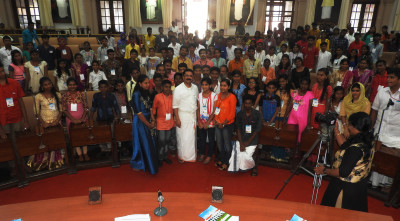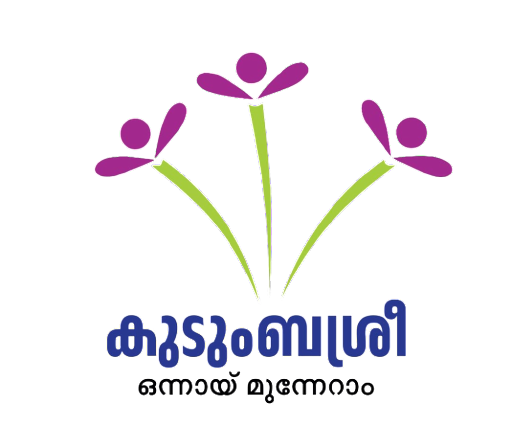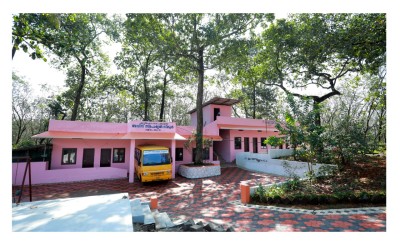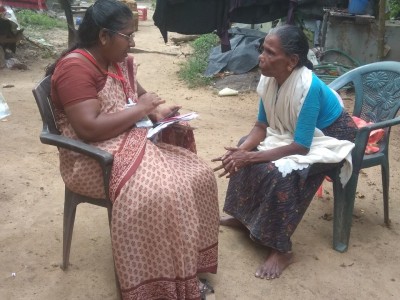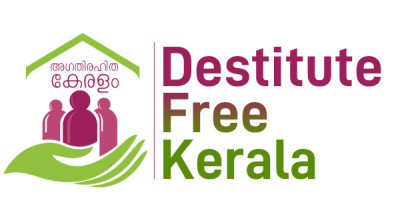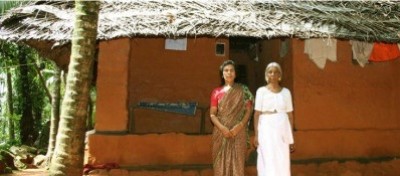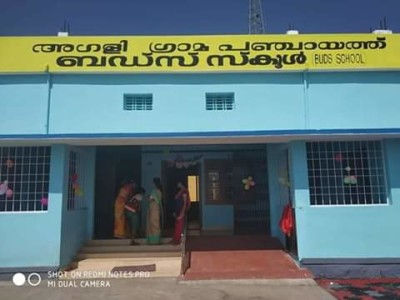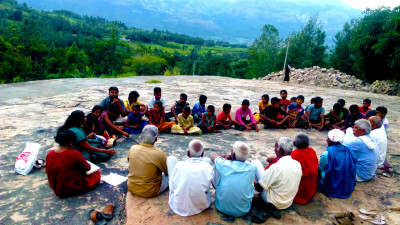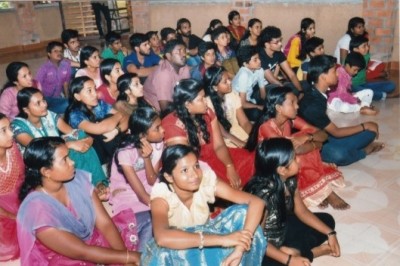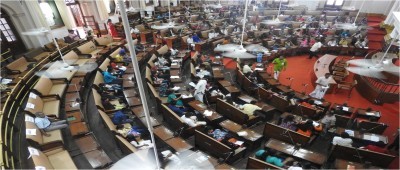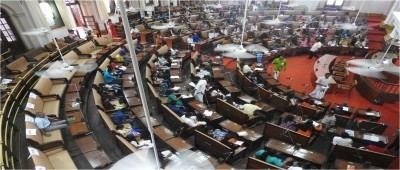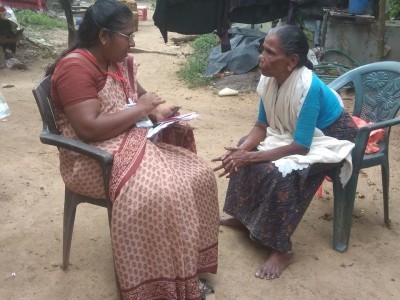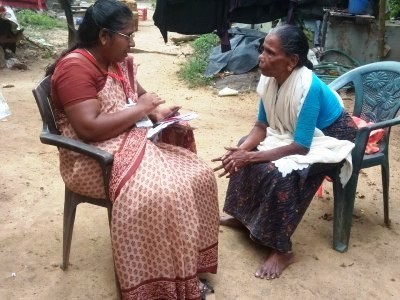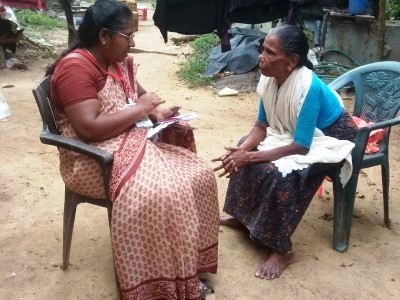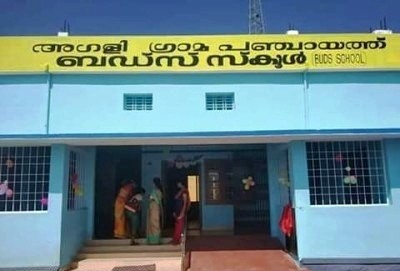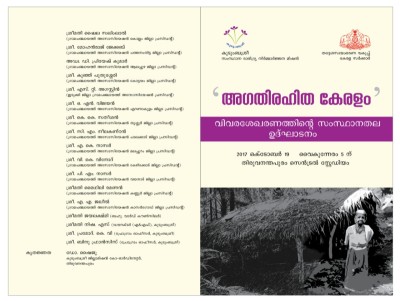BUDS INSTITUTIONS 2019-2020
Kudumbashree as the poverty eradication mission has been actively involved in the process of empowering women by making them aware of their rights and entitlements. In the mission of eradicating the poverty a need assessment was performed using the deprivation criteria. It was a unique survey compared to the conventional BPL survey performed. In the identification of poverty through the deprivation criteria the families shared their real life situations and problems which gave hither to unknown picture of poverty. It was revealed that destitution and disability are the major challenges encountered by the community. Kudumbashree thus initiated two major projects which are: Destitute identification and rehabilitation program named Asraya and Disability mainstreaming program namely BUDs.
DESTITUTE FREE KERALA 2019-20
Agathirahithakeralam – Reaching the Unreachable
Since independence, both the Central and State governments have been focusing on poverty eradication through the trickling down effect of the general growth process and direct income generation programs. All income generation programs were either asset generation programs or employment generation programs. Though these helped in uplifting many from the clutches of poverty, they failed at reaching out to the poorest of the poor. Thus the economic growth of the country, many a times, did not help the destitute to escape the penury to which they have been thrown into. In 2003, the Government of Kerala introduced a new project through the State Poverty Eradication Mission (Kudumbashree), catering to these unreachable poorest of poor, called Asraya. In 2017 Asraya the Asraya project which had seen many phases was restructured into a more comprehensive one time program called Agathirahithakeralam (Destitute Free Kerala).
BUDS INSTITUTIONS 2020-2021

In May 2004, Kudumbashree recognized that the needs of the most marginalized of the poor were not being addressed and realized that differently abled children especially intellectually disabled children in situations of poverty, while being the most vulnerable, were not being reached by any of the variety of poverty programs. In fact, these children often live in isolation and alienation, neglected by the community due to social stigmas and by their families due to already scarce resources. Their families are ill-equipped to deal with their special needs; resulting in children who are who do not receive proper medical attention and who do not reach their full developmental potential. In this situation Kudumbashree in convergence with Local Self Government Institutions established the BUDS Special Schools for Intellectually Disabled Children. The first school was started in Venganoor Panchayat of Trivandrum District. This method of education and rehabilitation of intellectually disabled quickly spread all over Kerala. In 2013 BUDS Rehabilitation Centers for Intellectually disabled persons above the age of 18 established by Kudumbashree. These centers were mainly given preference for the vocational and livelihood training and rehabilitation of the persons with intellectual disability.
At present 289 BUDS institutions are working under the supervision Kudumbashree and in the ownership of Local Self Government Institutions. There are 9002 intellectually disabled persons are educated, rehabilitated and under vocational training in these institutions. Well qualified Teachers in special education with Rehabilitation Council of India(RCI) registration are serving these institutions. The disabilities catered are Mental Retardation, Cerebral Palsy, Autism and Multiple Disability. In the process of socializing these children, different types of activities are conducted. To develop the artistic skills of the person with disability, art festival namely BUDS Fest is being conducted in Institution Level, District Level and State Level. The livelihood activities such as paper bag making, paper pen making, detergent making, File making, book making, MGNREGS works etc. are carrying out in these institution by the people above 18 years. To make the children familiar with the agriculture a program called Sanjeevani-Agri- Therapy also started recently.
The parents of the beneficiaries are not well trained in any skilled labour and many of them spend time with their child in the BUDS Institution. Hence Kudumbashree came up with the livelihood programs for those parents especially mothers. Umbrella making units, printing press, tailoring units, paper bag making units were also established within the premises of BUDS Institutions for such parents.
With the view of universalizing the education and rehabilitation of the intellectually disabled persons in Kerala, the Government declared the establishment of more such institutions in the LSGIs under the supervision of Kudumbashree.
DESTITUTE FREE KERALA 2020-21
Agathirahithakeralam – Reaching the Unreachable Since independence, both the Central and State governments have been focusing on poverty eradication through the trickling down effect of the general growth process and direct income generation programs. All income generation programs were either asset generation programs or employment generation programs. Though these helped in uplifting many from the clutches of poverty, they failed at reaching out to the poorest of the poor. Thus the economic growth of the country, many a times, did not help the destitute to escape the penury to which they have been thrown into. In 2003, the Government of Kerala introduced a new project through the State Poverty Eradication Mission (Kudumbashree), catering to these unreachable poorest of poor, called Asraya. In 2017 Asraya the Asraya project which had seen many phases was restructured into a more comprehensive one time program called Agathirahithakeralam (Destitute Free Kerala).
DESTITUTE FREE KERALA 2021-22
Destitute Free Kerala – Reaching The Unreachable
Since independence, both the Central and State governments have been focusing on poverty eradication through the trickling down effect of the general growth process and direct income generation programs. All income generation programs were either asset generation programs or employment generation programs. Though these helped in uplifting many from the clutches of poverty, they failed at reaching out to the poorest of the poor. Thus the economic growth of the country, many a times, did not help the destitute to escape the penury to which they have been thrown into. In 2003, the Government of Kerala introduced a new project through the State Poverty Eradication Mission (Kudumbashree), catering to these unreachable poorest of poor, called Asraya. In 2017 Asraya the Asraya project which had seen many phases was restructured into a more comprehensive one time program called Destitute Free Kerala(Agathirahitha Keralam).
BUDS INSTITUTIONS 2021-22
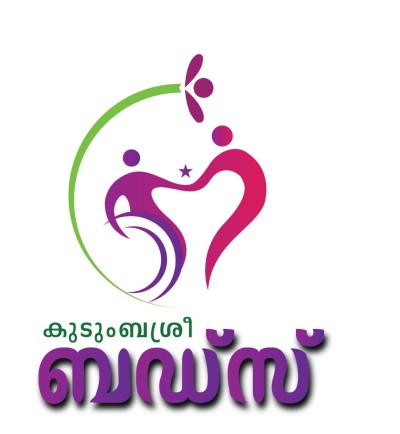
Disability is when a loss or reduction in any physical or psychological function results in a partial or total inability to perform any bodily or mental functions in a manner or within the range considered normal for a human being. Within the range of disabilities, mental challenges are felt as one of the serious problems affecting the family economically and emotionally. Kudumbashree initiated the Disability Mainstreaming Program namely Buds. To avoid the sin of labeling and stigmatizing towards the mentally challenged, the school was named as “BUDs”. The first BUDS institution was started at Venganoor Panchayat in 2004.
With the policy focus on inclusive and integrated education more and more mentally challenged children began to enroll in government schools. This has provided the mentally challenged children an opportunity for schooling in an inclusive atmosphere where they can learn upto the age of 18. However there was no institution to take care of the mentally challenged above the age of 18 especially in rural areas which became another problem and issue for the family. The neighborhood groups began to demand for day care and training for mentally challenged adult persons within the local areas. The panchayats also demanded for such an initiative. It was in these circumstances that Kudumbashree mission came up with the concept of BRC and the Government of Kerala approved the proposal. Thus Kudumbashree decided to focus also on post school age group. The Government of Kerala accordingly approved the innovative model. Thus in 2015 BUDs Rehabilitation Center was formed. The centre focuses on the rehabilitation, training and day care of these mentally challenged persons.
